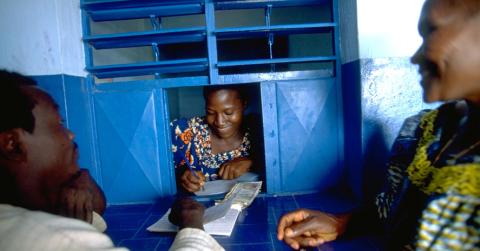More from UN DESA
Cutting the cost of family remittances

Every day, millions of families around the world visit their post offices, banks and money transfer operators to collect money sent to them by their relatives working abroad. These family remittances are often what allows them to send their children to school, make home improvements, set up small businesses or simply get by.
Estimated at hundreds of billions of dollars each year, the remittances not only support families, but help entire countries develop and eradicate poverty. Recognizing their importance, the United Nations General Assembly has proclaimed 16 June as the International Day of Family Remittances.
While border closures due to the COVID-19 pandemic have severely restricted all forms of human mobility, the vital remittances continued to flow. The most recent data from the World Bank show that remittances to low- and middle-income countries reached $540 billion in 2020, just 1.6 per cent less than in 2019.
This trend, defying earlier pessimistic projections, is consistent with historical observations: in time of financial crises or natural disasters, migrants tend to increase remittance transfers to support struggling family members back home.
The significance of family remittances was not lost on the designers of the Sustainable Development Goals either. Goal 10 of the SDGs includes a target of reducing the average transaction costs of migrant remittances to less than 3 per cent by 2030. Yet the world is not on track to achieve that ambitious benchmark.
According to the latest World Bank data from the end of 2020, the global average cost of sending $200 was 6.5 per cent – more than double the SDG target. Average remittance costs were the lowest in South Asia, at 4.9 per cent, while sub-Saharan Africa continued to have the highest average cost – a whopping 8.2 per cent.
In July 2021, Member States will have an opportunity to assess the transformative impact of remittances across the SDGs during the High-level Political Forum on Sustainable Development. And next year, the General Assembly will take stock of the Global Compact for Safe, Orderly and Regular Migration, including the critical linkages between international migration and sustainable development.
See how you can get involved here.
 Welcome to the United Nations
Welcome to the United Nations